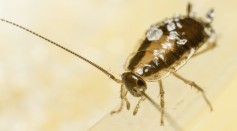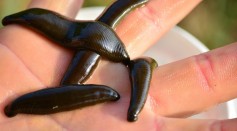Parasites
![Tiny Black Holes Could Be Eating Stars From Their Cores Like Parasites [Study]](https://1721181113.rsc.cdn77.org/data/images/full/50808/tiny-black-holes-could-be-eating-stars-from-their-cores-like-parasites-study.jpeg?w=237&h=131)
Tiny Black Holes Could Be Eating Stars From Their Cores Like Parasites [Study]

Intestinal Parasites Are Picky With Their ‘Living Quarters’, Prefers Animals With Similar Guts
'Parasite' Slithers Out From Woman's Eyelid; People Says It's Botfly

Parasites Like Tapeworms, Flatworms, Flukes May Have Greater Negative Effect on Overall Health of Their Mammal Hosts
Bizarre, Transparent Sea Creature Reeled by Fishermen Turns to Be 2 Different Animals and 1 Is a Parasite

Toxoplasmosis: Humans Infected With Brain-Hijacking Toxoplasma Gondii Parasites More Attractive and Look Healthier

Parasites Reduce Herbivory Behavior Among Animals That Triggers Adverse Effects on Plant Ecosystems
[Watch] Alaskan Bear Wandering Around with Tapeworms From Their Butts
Parasites Extinction Could Cause Planetary Doom: Ecologists
Face Mites Live on the Face so Humans are Never Alone!

Researchers Discover Parasite in Cat Poop, Linked to Higher Risk of Brain Cancer

Leeches As Pets? People Are Letting These Parasites Suck Their Blood

Molecular Structure of Parasites Reveal Gliding Abilty
Invasive, Blood Sucking Parasites on Shrimps Continue Moving Northward
Most Popular

AI Revolution in Medical Education: Transforming How Healthcare Professionals Learn

Optimizing Complex Catalog Systems with Graph Theory and Indexing

Exploring Life Beyond Earth: Study Claims Other Planets Could Be Suitable for Alien Life

China’s Tiangong Space Station to Expand Its Capabilities With New Modules






